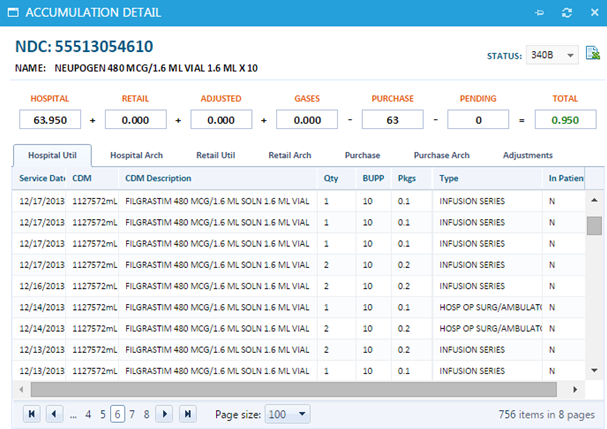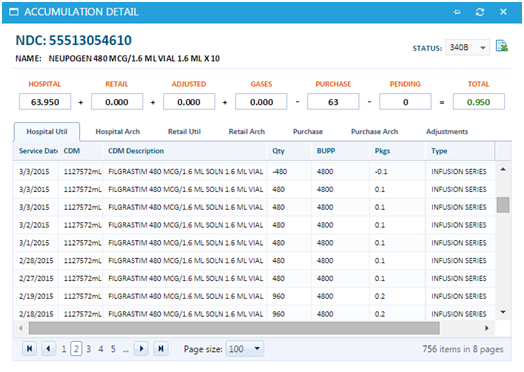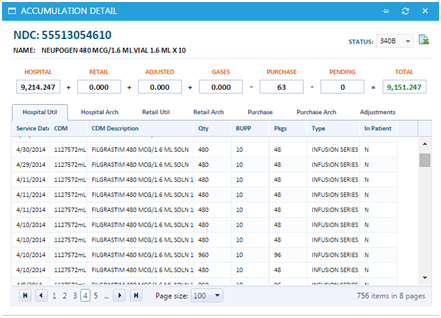-
340B Architect
-
Updates & Announcements
-
340B Architect
-
340B Impact
-
340B RxCorrelate
-
340B Monitor
-
340B Written Location
-
340B Central Split
-
All About Architect Webinar Series
-
More Resources
-
Right Side Callout
-
Release notes
-
Recent Manufacturer Notices
-
More Videos
The Billing Unit Per Package (BUPP) is the total number of chargeable units per package that must be charged before the item can be reordered. The chargeable units can equate to tablets, milligrams, milliliters, J-Code, syringes, vials, etc.
NOTE: Sometimes the quantity that is submitted in the pharmacy may differ from the quantity that comes across in the drug utilization feed that is displayed in 340B Architect.
In the instance when CDM 1127572mL is charged per vial for Neupogen 480 mcg/1.6 ml x 10 at the facility, the billing units per package (BUPP) should be set to 10 because there are a total of 10 vials in the package, or NDC.
In 340B Architect, a dispensed quantity of 1, Qty, indicates the patient received 1 vial out of a package of 10; thus, 0.1 packages (Pkgs) would accumulate per charge when the ‘BUPP’ is set to 10.

When CDM 1127572mL is charged per microgram for Neupogen 480 mcg/1.6 ml x 10 at the facility, the billing units per package (BUPP) should be set to 4800 because there are a total of 4800 micrograms in this package or NDC.
In 340B Architect, a dispensed quantity, Qty, of 480 indicates that the patient received 480 mcg out of package of 4800 mcg total; thus, 0.1 packages (Pkgs) would accumulate per charge when the ‘BUPP’ is set to 4800.

How an Incorrect BUPP Can Affect Your Accumulations
The BUPP is crucial to accumulation accuracy. In a similar example, the facility is charging per microgram but has a BUPP of 10. Each charge of 480 with a BUPP of 10 would accumulate 48 packages, which would be a significant over-accumulation of Neupogen vials.

Similarly, the facility is charging per vial but has a BUPP of 4800. This facility would need to dispense 4800 340B-qualified vials to be eligible to reorder 1 package of 10 vials. This example represents a significant under-accumulation of Neupogen vials.

 View Crosswalk History
View Crosswalk History